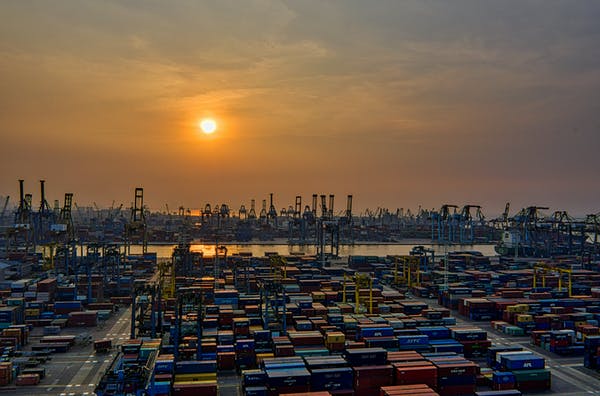By: Thessalonica Rotinsulu, S.H.
“When digital transformation is done right, it’s like a caterpillar turning into a butterfly, but when done wrong, all you have is a fast caterpillar”. – George Westerman, MIT SLOAN Initiative on the Digital Economy.
Digital transformation has reduced costs of engaging in international trade, facilitated global value chain (GVC) coordination, helped spread ideas and technology and connected more businesses and consumers globally. The adoption of new business models raises international trade transactions as well as more complex policy issues. In this fast-paced and interconnected world, governments are facing new regulatory challenges, not only in managing issues arising from digital disruption but also in ensuring that the opportunities and benefits of digital trade are realized and shared in an inclusive manner.
The Internet has revolutionized trade, especially trade across national borders. Companies are increasingly using the internet to facilitate sales transactions for goods or services that need to be delivered physically. Certain goods or services that are normally delivered physically can be delivered via the internet, eliminating the need for physical movement of the goods or service provider. The Internet has also transformed production processes, with digital data, not unfinished parts, or products, moving across national borders. Finally, digital technology has created a demand for trade in digital goods or services that did not exist before the internet, a form of trade in which digital data plays a dominant role in digital trade.
Read More: The Procedures, Regulations, and Requirements for a Stay Permit in Indonesia
International trade law, which primarily comprises World Trade Organization (WTO) law, operates within mutually exclusive categories of goods and services. Under WTO law, trade in goods is governed by the General Agreement on Tariffs and Trade (GATT), which was updated in 1994 under Annex 1A to the umbrella Agreement which established the WTO agreement as one of the Multilateral Agreements on Trade in Goods. Trade in services is governed by the General Agreement of Trade in Services (GATS), which is the only agreement under a separate annex to the WTO agreements. The classification of certain goods as goods or services directly affects which WTO agreements apply and what legal protections are available.
Digitization increases the scale, scope, and speed of trade to some extent. This allows companies to bring new goods and services to more digitally connected customers around the world. This allows companies, especially smaller ones, to use new and innovative digital tools to overcome growth barriers, help facilitate payments, enable collaboration, avoid investing in fixed assets using cloud-based services, and use alternative funding mechanisms such as crowdfunding.
The growth of online platforms has led to an increasing number of small parcels being sold across international borders. This raises a range of issues for policymakers, ranging from the physical management of parcel trades to the implications of risk management (such as regarding counterfeit goods or biosecurity standards), and the revenue implications of collecting taxes and tariffs.
For services, this means being able to deliver faster and on-demand, often 24/7, so consumers can have instant access to the services they need when they need them. As for goods, this means using digital solutions for trade facilitation, helping goods move rapidly across borders. Trade rules have traditionally been predicted to identify whether a product is a good or a service and the border it crosses. In the digital age, this distinction may not always be clear. Companies are now increasingly able to operate flexibly from different locations and combine goods with services, making it difficult to identify specific trade rules that apply to specific transactions.
International rules for digital trade address specific regulatory issues such as consumer protection and spam, as well as encompassing the broad principle of non-discrimination, which offers more general international oversight. The two main aspects of the principle are:
- Nondiscrimination obligations, which in the international trade context require that domestic regulations treat comparable foreign and domestic products alike and treat comparable foreign products from different countries alike
- Exceptions for various public policies, which ensure that the international trade regime does not interfere with policy making on non trade issues.
Read More: Cryptocurrency in Indonesia Market
Summing up, international trade is being transformed by the globalization of the internet and the ability to move data across borders. Digital trade is not only about buying and selling goods and services online, but also about transmitting information and data across borders. It relies on using digital technology to facilitate trade and increase productivity, through simplified customs procedures. While the flow of information and data may not always be beneficial, they are important supports of digital trade.
Hope to see you in the next article!
References:
Department of Foreign Affairs and Trade. “Digital Trade & the Digital Economy”. Australian Government. https://www.dfat.gov.au/trade/services-and-digital-trade/e-commerce-and-digital-trade.
“The Impact of Digitalisation on Trade”. Organization for Economic Co-operation and Development.. https://www.oecd.org/trade/topics/digital-trade/.
Simon Lester. “Digital Trade Agreements and Domestic Policy”. CATO Institute. 2021. https://www.cato.org/free-trade-bulletin/digital-trade-agreements-domestic-policy#endnotes
Wentong Zheng. “The Digital Challenge to International Trade Law”. UF Law Faculty Publications. University of Florida Levin College of Law. 2020.
Image source: pixabay.com
Editor: Bambang Sukoco, S.H.




